No products in the cart.
Blog
How Ceramic Mugs Are Made? Step-By-Step Guide
Ceramic mugs are not just vessels for holding beverages; they are a blend of artistry and functionality, crafted through a meticulous process that combines traditional techniques with modern innovation. From the initial mixing of raw materials to the final packaging, each step contributes to the creation of a ceramic masterpiece. In this article, we delve into the intricate process of how ceramic mugs are made, unveiling the craftsmanship behind every sip.
How Ceramic Mugs Are Made In 10 Simple Steps
The process of creating these vessels is an art form in itself, blending traditional craftsmanship with modern techniques. Answering the question how are cups made? Let’s embark on this fascinating exploration of the craft behind ceramic mug manufacturing.
Mix The Materials

The journey of crafting a ceramic mug begins with the selection and mixing of raw materials. The primary components include clay, minerals, and water. Clay serves as the foundation, providing plasticity and shaping capabilities. Various minerals such as feldspar, silica, and kaolin are added to enhance qualities like durability, texture, and color.
Milling
Once the materials are gathered, they undergo a milling process to achieve a homogenous mixture. This step ensures that the clay and minerals are evenly distributed, resulting in consistent characteristics throughout the final product. Milling also helps in breaking down any large particles and removing impurities, refining the blend to the desired quality.
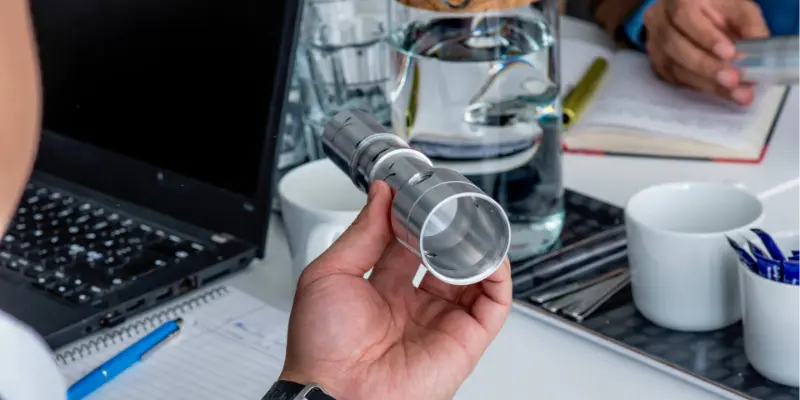
Molding
After milling, the prepared mixture is ready for molding. Molding is a crucial stage where the shape and structure of the cup are defined. There are several techniques for molding ceramic mugs, including slip casting, jiggering, and pressing. Slip casting involves pouring the liquid clay mixture into plaster molds, allowing it to set and form the desired shape. Jiggering and pressing utilize mechanical methods to shape the clay, offering precision and efficiency in production.
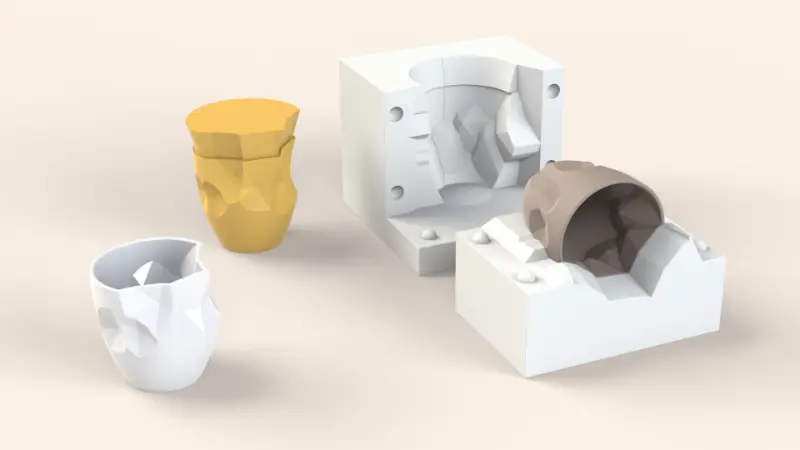
Handle Application
For mugs with handles, an additional step is required for handle application. Handles are typically made separately from the main body of the mug and attached using a slip or scoring technique. This process demands precision and skill to ensure that the handle is securely bonded to the mug while maintaining aesthetic harmony.
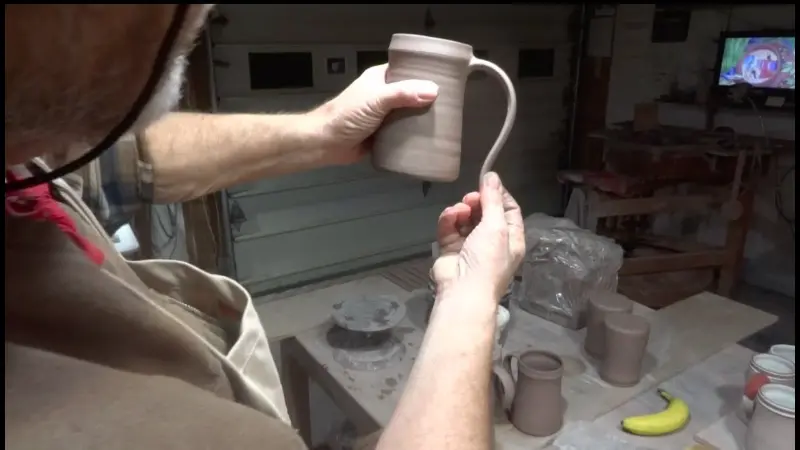
Detailing
Detailing is where the mug starts to take on its unique characteristics. Artisans may incorporate various techniques such as carving, stamping, or embossing to add texture and design elements to the surface of the mug. These details not only enhance the visual appeal but also provide tactile interest, inviting users to appreciate the craftsmanship with their senses.
Glazing
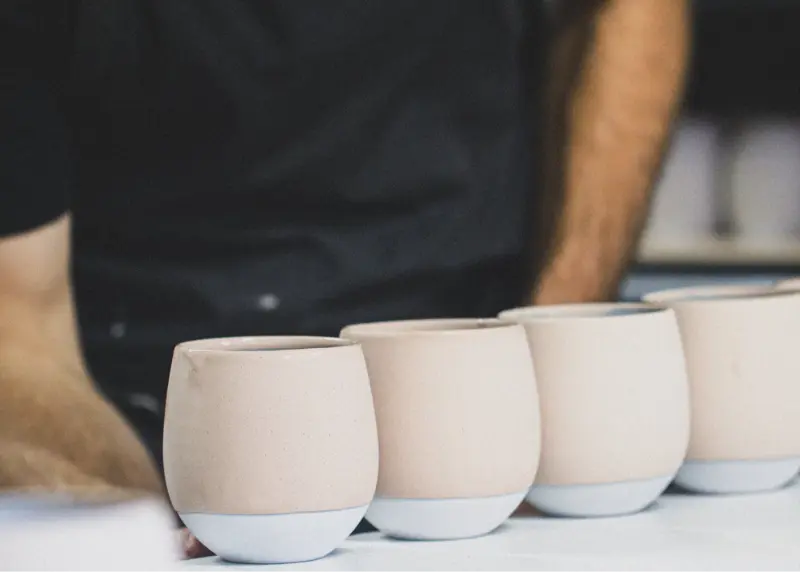
Glazing is a pivotal step that not only adds a decorative finish but also protects the mug from moisture and enhances its durability. Glazes are composed of silica, fluxes, and colorants, which melt and fuse together during firing to form a glassy coating on the surface of the mug. The glazing process requires precision in application to achieve desired coverage and consistency.
Drying
After glazing, the cups undergo a drying process to remove excess moisture and prepare them for firing. Controlled drying is essential to prevent cracking or warping of the ceramic during firing. Depending on the size and thickness of the mugs, drying may take several hours to ensure thorough evaporation of moisture from the clay body.
Firing
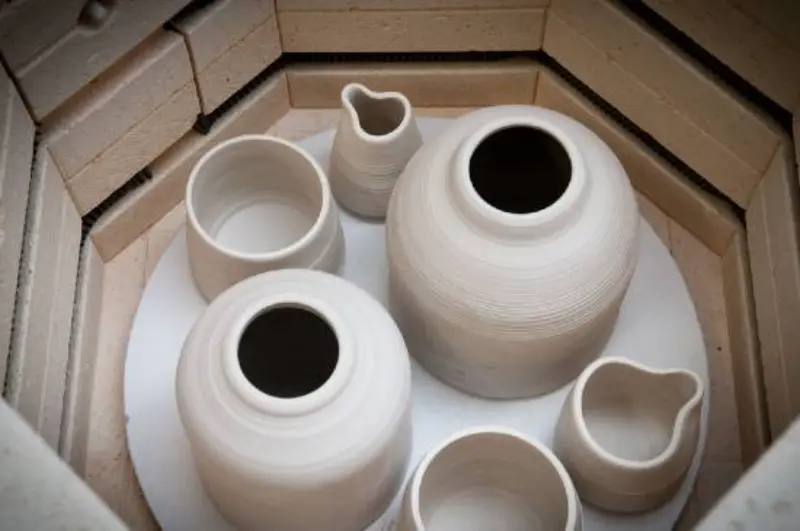
Firing is the transformative stage where the mugs are subjected to high temperatures to vitrify the clay and fuse the glaze. This process typically takes place in a kiln, a specialized oven designed for firing ceramics. The firing schedule involves carefully controlled heating and cooling cycles to prevent thermal shock and achieve desired physical and aesthetic properties.
Print A Design
In contemporary ceramic production, many mugs are adorned with custom designs or logos through various printing techniques. Digital printing, screen printing, and decals are common methods used to transfer intricate designs onto the surface of the mug. These printing processes offer versatility and precision, allowing for a wide range of creative possibilities to personalize the mugs according to customer preferences.

Packaging
The final step in the journey of making ceramic mugs is packaging. Mugs are carefully inspected for quality assurance before being wrapped and boxed for shipping or display. Packaging materials such as cardboard boxes, bubble wrap, and tissue paper are chosen to provide adequate protection during transit while showcasing the mugs attractively to consumers.
How To Print On Ceramic Mugs?
Printing on ceramic mugs is a popular method for adding custom designs, logos, or artwork to personalize these everyday objects. There are several techniques available for printing on ceramic mugs, each offering different levels of detail, durability, and cost-effectiveness. Let’s explore some of the common methods used to print on ceramic mugs:
Direct Printing
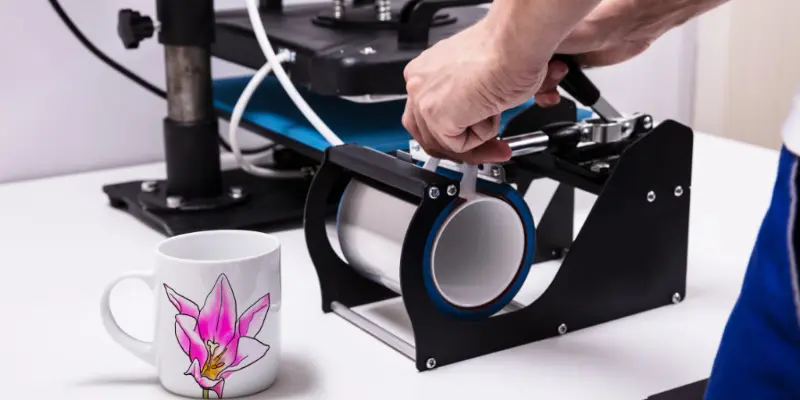
Direct printing involves applying ink directly onto the surface of the ceramic mug using specialized printers equipped with ceramic ink. This method offers high-resolution printing capabilities, allowing for intricate designs and vibrant colors.
Direct printing is suitable for small-scale production or custom orders, as it offers flexibility and quick turnaround times. However, the durability of the printed design may vary depending on the quality of the ink and the surface preparation of the mug.
Screen Printing
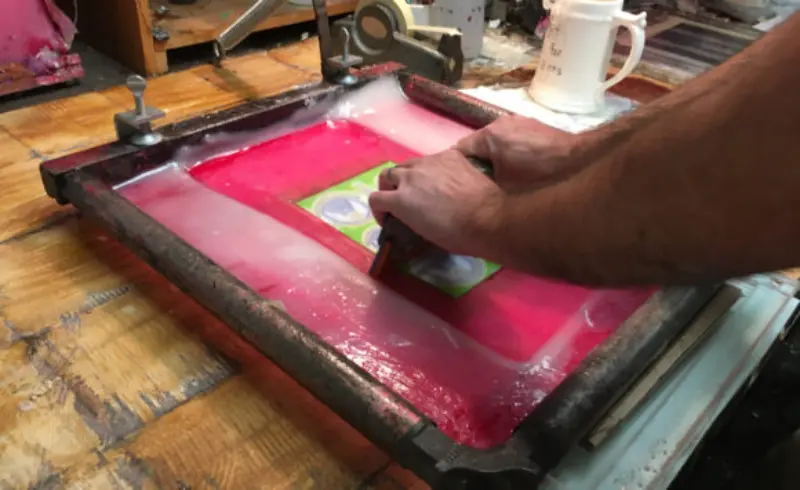
Screen printing is a traditional method that involves transferring ink onto the mug through a fine mesh screen stencil. The design is first transferred onto the screen, and then ink is forced through the stencil onto the mug using a squeegee.
Screen printing offers excellent color saturation and durability, making it suitable for large production runs and commercial applications. However, it requires setup time and is more cost-effective for single-color or simple designs.
Decal Transfer
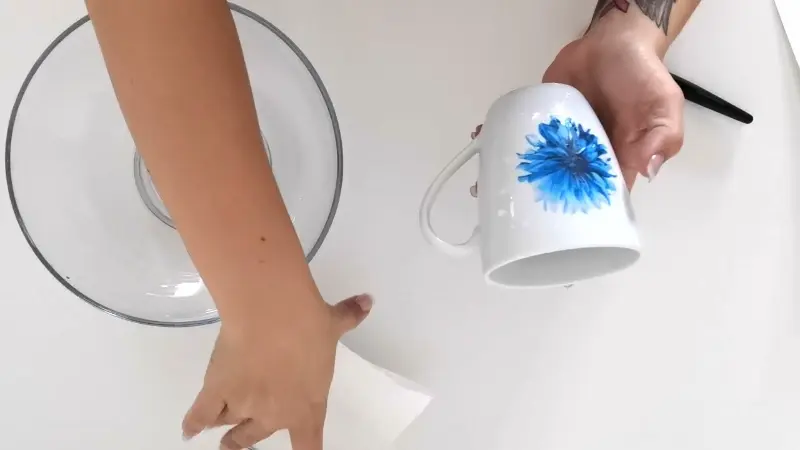
Decal transfer involves printing the design onto a special transfer paper or film using a digital printer. The printed decal is then transferred onto the ceramic mug using heat and pressure. Decal transfer allows for detailed, full-color designs and is ideal for complex artwork or photographic images.
The transferred decal is sealed onto the mug with a clear glaze, providing durability and resistance to fading or scratching. Decal transfer is commonly used for custom or limited-edition mugs and offers a professional finish.
Pad Printing
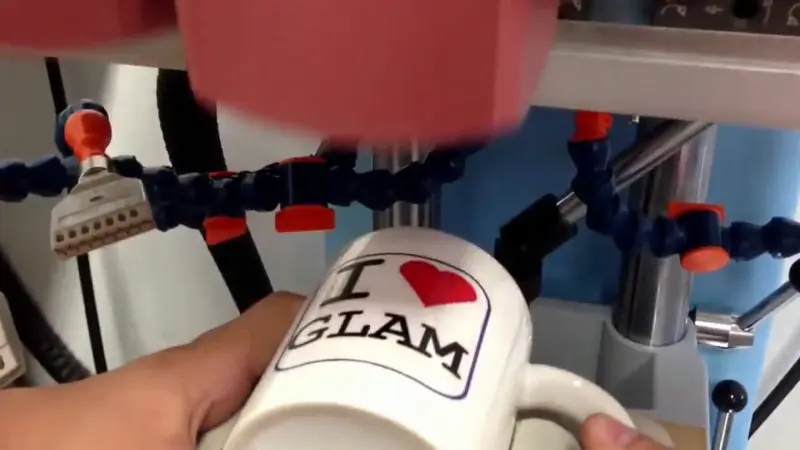
Pad printing is a versatile method that involves transferring ink onto the mug using a silicone pad. The design is etched onto a metal plate, and ink is applied to the plate. The silicone pad picks up the ink from the plate and transfers it onto the curved surface of the mug.
Pad printing offers precise registration and is suitable for irregularly shaped mugs or designs with multiple colors. It is commonly used for promotional items or mass-produced mugs due to its efficiency and cost-effectiveness.
Sublimation Printing
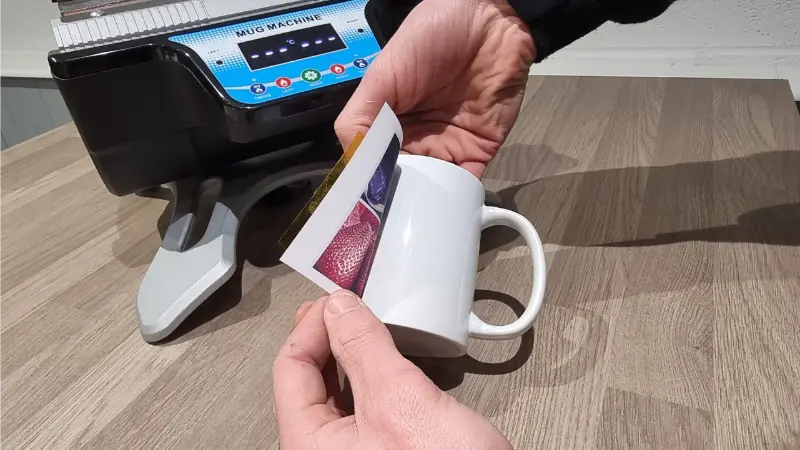
Sublimation printing involves printing the design onto a special sublimation transfer paper using dye-based inks. The printed design is then transferred onto the ceramic mug using heat and pressure, causing the ink to sublimate and penetrate the surface of the mug.
Sublimation printing offers vibrant, long-lasting colors and is suitable for full-wrap designs or intricate patterns. It is commonly used for small-scale production or custom orders, as it requires specialized equipment and materials.
FAQs

What materials are used to make ceramic mugs?
Ceramic mugs are typically made from a blend of clay, minerals, and water. Clay serves as the primary component, providing plasticity and shaping capabilities. Various minerals such as feldspar, silica, and kaolin are added to enhance qualities like durability, texture, and color. Additionally, glazes made from silica, fluxes, and colorants are applied to the surface of the mugs for decorative finishes and added protection.
How are ceramic mugs molded into shape?
Ceramic mugs can be molded into shape using various techniques, including slip casting, jiggering, and pressing. Slip casting involves pouring the liquid clay mixture into plaster molds, allowing it to set and form the desired shape. Jiggering utilizes mechanical methods to shape the clay on a rotating wheel, while pressing involves pressing the clay into molds using hydraulic or pneumatic pressure. These molding techniques offer flexibility and precision in shaping the mugs according to desired designs and specifications.
What is the firing process involved in making ceramic mugs?
The firing process is a crucial step in making ceramic mugs, where the molded clay undergoes high temperatures to vitrify and transform into a durable, ceramic material. The mugs are placed in a kiln, a specialized oven designed for firing ceramics, and subjected to controlled heating and cooling cycles.
During firing, the clay particles fuse together, and the glazes melt and form a glassy coating on the surface of the mugs. Proper firing schedules are essential to ensure uniform heating and prevent thermal shock, which could cause cracking or warping of the ceramic.

How are designs printed or applied to ceramic mugs?
Designs can be printed or applied to ceramic mugs using various techniques, including direct printing, screen printing, decal transfer, pad printing, and sublimation printing. Direct printing involves applying ink directly onto the surface of the mug using specialized printers equipped with ceramic ink. Screen printing uses a stencil and ink to transfer designs onto the mug’s surface.
Decal transfer involves printing designs onto transfer paper and transferring them onto the mug using heat and pressure. Pad printing utilizes a silicone pad to transfer ink onto the mug’s surface, while sublimation printing involves transferring designs using heat and pressure with dye-based inks.
How are ceramic mugs packaged for distribution?
Once the ceramic mugs are produced and printed with designs, they undergo inspection for quality assurance before being packaged for distribution. Packaging materials such as cardboard boxes, bubble wrap, and tissue paper are used to provide adequate protection during transit.
The mugs are carefully wrapped and boxed, taking care to prevent breakage or damage during handling and shipping. Packaging may also include branding, labeling, or instructions for the end consumer, depending on the intended market and distribution channels.

In conclusion, the creation of ceramic mugs is a labor of love that combines craftsmanship, science, and artistry. From the initial processing of raw materials to the final packaging, each step in the production process contributes to the creation of a functional and aesthetically pleasing product. By understanding the intricate journey behind how are cups made, we gain a deeper appreciation for the skill and dedication of the artisans who bring these everyday objects to life.


